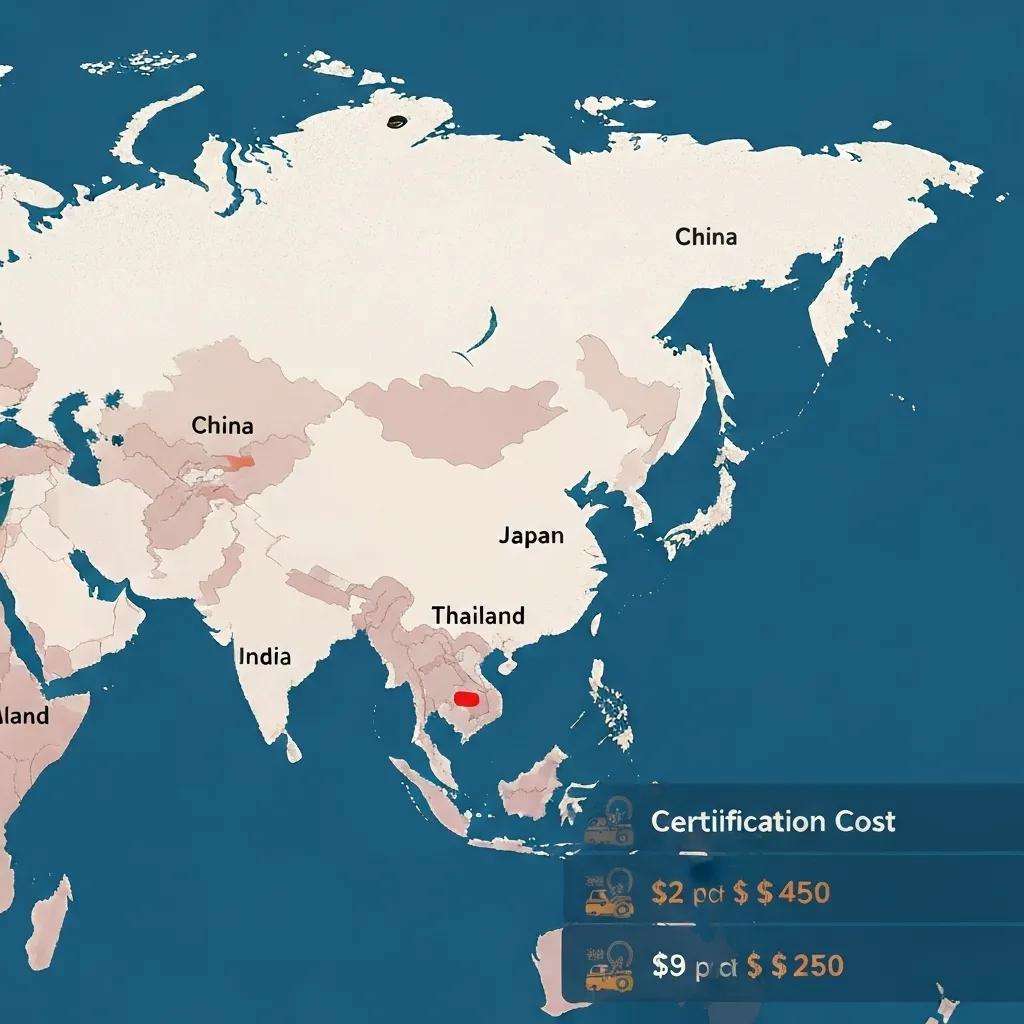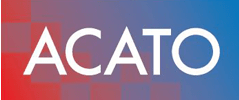A Professional Guide to ISO 9001 Costs Across Asia

ISO 9001 Certification Cost in Asia: A Clear Breakdown for Businesses
Asian companies face widely varying ISO 9001 certification expenses that hinge on audit scope, provider selection, and organizational complexity. Accurate budgeting avoids surprises and maximizes return on quality management investments. This guide explains the main cost drivers, compares fees in China, India, Japan, Malaysia, and Thailand, uncovers hidden training and surveillance charges, offers practical savings tactics, and highlights ROI implications for informed decision-making.
What Are the Main Factors Influencing ISO 9001 Certification Cost in Asia?
Certification cost comprises auditor fees, preparation effort, and surveillance audits because each driver adds time, expertise, and administrative work. For example, a 200-employee electronics plant incurs higher consultant days and specialized audits than a small consultancy. Recognizing these factors ensures reliable budget forecasts and smooth implementation.
How Do Company Size and Industry Affect Certification Expenses?
Company size dictates auditor days and documentation volume, while regulated industries such as automotive or medical devices require technical experts and extended sampling. A mid-sized manufacturer typically pays 20% more than a similar service firm because of process complexity. These variances prepare organizations to align scope with available resources.
What Role Does the Certification Body Play in Pricing?
Certification bodies set rates based on accreditation status, auditor credentials, and geographic presence. International registrars often charge premium hourly rates, whereas local bodies may offer competitive packages with regional audit teams. Selecting a provider balances cost against recognized credibility and audit rigor.
How Does the Scope of ISO 9001 Implementation Influence Cost?
Expanded scope—covering multiple sites or integrated management systems—multiplies audit duration and travel expenses. Narrowing certification to core processes reduces auditor days and cutting costs. Defining clear boundaries for quality management coverage optimizes both effectiveness and budget.
How Much Does ISO 9001 Certification Typically Cost Across Key Asian Countries?

Regional market rates reflect local labor costs, accreditation fees, and demand. In these markets, businesses encounter distinct fee structures driven by national regulations and auditor availability.
What Are the Average Certification Fees in China, India, and Japan?
Below are typical one-time audit fees charged by accredited bodies in major economies:
| Country | Typical Audit Fee (USD) | Accreditation Note |
|---|---|---|
| China | 2,000 – 3,500 | Competitive local rates |
| India | 1,500 – 2,800 | Growing pool of certified auditors |
| Japan | 3,000 – 5,000 | Premium for technical expertise |
These fee ranges guide initial quotations before adding preparation or travel allowances.
ISO 9001 Certification Costs in China - in English
Research indicates that the cost of ISO 9001 certification in China can vary significantly based on factors such as company size, industry, and the certification body chosen. These costs typically include audit fees, preparation expenses, and ongoing surveillance costs. The specific figures can range widely, reflecting the competitive market and the diverse needs of businesses seeking certification.
Smith, A., “ISO 9001 Certification Costs: A Comparative Analysis of China,” Journal of Quality Management, (2023)
How Do Costs Differ Between Southeast Asian Nations Like Malaysia and Thailand?
Malaysia’s average certification audit costs range from USD 1,800 to 3,200 thanks to established registrars, while Thailand’s fees of USD 1,600 to 2,700 reflect emerging audit services. Local economic factors and accreditation overhead explain these differences and inform cross-border planning.
Certification Costs in Southeast Asia - in English
Studies show that the costs associated with ISO 9001 certification in Southeast Asian countries, such as Malaysia and Thailand, are influenced by local economic factors, the availability of auditors, and the accreditation overhead. These costs are often lower than in more developed markets, reflecting the competitive landscape and the growing demand for certification services.
Brown, L., “Quality Management Systems: A Southeast Asian Perspective,” International Journal of Business and Management, (2024)
What Are the Additional Costs Beyond Certification Fees?
Beyond registrar charges, companies must invest in internal audits, staff training, and annual surveillance to sustain compliance. These supplementary expenses typically account for 15–30% of total certification outlay.
How Much Should You Budget for Internal Audits and Training?
Internal audit and training costs often include consultant rates and course fees.
| Cost Element | Typical Range (USD) | Purpose |
|---|---|---|
| Internal audit days | 500 – 1,000 per day | Process reviews and reports |
| Staff training | 200 – 500 per person | Awareness and procedure workshops |
Allocating funds for thorough preparation prevents last-minute nonconformities and delays.
What Are the Ongoing Surveillance and Recertification Costs?
Annual surveillance audits cost about 50% of initial certification fees, while full recertification every three years equals roughly 80% of initial audit costs. Planning for these charges ensures uninterrupted quality system validation and continuous improvement cycles.
How Can Asian Businesses Reduce ISO 9001 Certification Costs Effectively?

Cost-reduction hinges on strategic choices before and during certification. Early planning, targeted scope definition, and provider selection all contribute to savings.
What Are the Benefits of Choosing Local Certification Bodies?
Local bodies often provide lower travel overhead, faster response times, and familiarity with regional standards. This proximity reduces per-day rates by 10–20% and accelerates audit scheduling without sacrificing accreditation credibility, enabling agile roll-out.
How Does Proper Preparation Lower Overall Certification Expenses?
Comprehensive gap analyses, well-documented procedures, and pilot audits minimize nonconformities and extra auditor days. Investing in a structured readiness assessment can cut actual audit time by up to 30%, translating directly into lower fees and smoother certification.
Why Is Understanding ISO 9001 Certification Cost Important for Asian Companies?
A clear cost picture informs strategic quality investment, aligns stakeholder expectations, and underpins sustainable growth through certified processes.
How Does Certification Cost Affect ROI and Business Growth?
Certification expenses enable access to regulated markets, preferred supplier lists, and efficiency gains. When managed well, the initial outlay delivers faster order wins, reduced defects, and improved operational performance that exceed budgeted costs.
What Are the Risks of Underestimating Certification Expenses?
Underbudgeting leads to audit delays, scope reductions, and potential nonconformities that incur corrective fees. This financial shortfall can erode trust with clients and extend time-to-market, undermining the very benefits certification aims to deliver.
Achieving clarity on ISO 9001 certification costs empowers Asian businesses to invest wisely in quality management, balancing audit fees, training, and surveillance with strategic benefits. By mapping expenses across regions, selecting the right certification body, and preparing thoroughly, companies secure a robust ROI and position themselves for long-term growth.
Frequently Asked Questions
What is the typical timeline for obtaining ISO 9001 certification in Asia?
The timeline for obtaining ISO 9001 certification can vary significantly based on the organization’s size, complexity, and readiness. Generally, the process can take anywhere from three to six months. This includes time for initial assessments, preparation of documentation, internal audits, and the actual certification audit. Companies that invest time in thorough preparation and training can often expedite the process, while those that encounter nonconformities may face delays. It’s essential to plan accordingly to ensure a smooth certification journey.
Are there any financial incentives or grants available for ISO 9001 certification in Asia?
Many Asian governments and local agencies offer financial incentives, grants, or subsidies to encourage businesses to pursue ISO 9001 certification. These programs aim to enhance competitiveness and improve quality standards across industries. The availability of such incentives varies by country and region, so businesses should research local government initiatives or consult with industry associations to identify potential funding opportunities. Engaging with local chambers of commerce can also provide insights into available support for certification efforts.
How can businesses ensure they maintain ISO 9001 compliance after certification?
Maintaining ISO 9001 compliance requires ongoing commitment to quality management practices. Businesses should establish a robust internal audit schedule, conduct regular training sessions for staff, and continuously monitor processes for improvement. Additionally, engaging in management reviews and addressing any nonconformities promptly is crucial. Companies should also stay updated on changes to the ISO 9001 standard and adapt their quality management systems accordingly. This proactive approach helps sustain compliance and enhances overall operational efficiency.
What are the common challenges faced during the ISO 9001 certification process?
Common challenges during the ISO 9001 certification process include resistance to change from employees, inadequate documentation, and lack of management support. Organizations may also struggle with understanding the standard’s requirements or aligning existing processes with ISO principles. To overcome these challenges, businesses should foster a culture of quality, provide comprehensive training, and ensure strong leadership involvement. Engaging a knowledgeable consultant can also help navigate the complexities of the certification process effectively.
How does ISO 9001 certification impact customer satisfaction and business reputation?
ISO 9001 certification can significantly enhance customer satisfaction and business reputation by demonstrating a commitment to quality and continuous improvement. Certified organizations often experience increased trust from clients, leading to higher customer retention and loyalty. Additionally, being ISO 9001 certified can differentiate a business in competitive markets, making it more attractive to potential customers. This certification signals that the organization adheres to internationally recognized quality standards, which can positively influence purchasing decisions.
What steps should a company take if it fails to achieve ISO 9001 certification?
If a company fails to achieve ISO 9001 certification, it should first conduct a thorough analysis to identify the reasons for nonconformity. This may involve reviewing audit findings and addressing any gaps in processes or documentation. The organization should then develop an action plan to rectify these issues, which may include additional training, process improvements, or engaging external consultants for guidance. Once the necessary changes are implemented, the company can reapply for certification, ensuring a more prepared approach for the next attempt.

